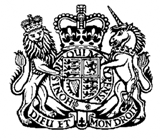- Latest available (Revised)
- Original (As enacted)
Benefices Measure 1972
You are here:
- Church Measures
- 1972 No. 3
- Whole Measure
- Previous
- Next
- Show Geographical Extent(e.g. England, Wales, Scotland and Northern Ireland)
- Show Timeline of Changes
More Resources
Changes over time for: Benefices Measure 1972
Alternative versions:
Changes to legislation:
There are currently no known outstanding effects for the Benefices Measure 1972.![]()
Changes to Legislation
Revised legislation carried on this site may not be fully up to date. At the current time any known changes or effects made by subsequent legislation have been applied to the text of the legislation you are viewing by the editorial team. Please see ‘Frequently Asked Questions’ for details regarding the timescales for which new effects are identified and recorded on this site.
Benefices Measure 1972
1972 No. 3
A Measure passed by the General Synod of the Church of England to provide an additional ground for refusing to institute or admit a presentee to a benefice, and for purposes connected therewith.
[10th February 1972]
Commencement Information
I1Measure wholly in force at Royal Assent.
1 Additional ground for refusing to institute.E
(1)Where a clerk in Holy Orders who has not previously held a benefice or the office of vicar in a team ministry is presented to a benefice, the grounds on which the bishop may in his discretion refuse to institute or admit him to the benefice shall include the following additional ground, namely, that the presentee has had no experience or less than three years’ experience as a full-time parochial minister.
(2)Where the bishop refuses to institute or admit a presentee on the ground aforesaid, he shall signify in writing the refusal and ground thereof to the person presenting to the benefice and the presentee, and either of those persons may, within one month after the signification, appeal in writing to the archbishop of the province, who may either uphold the bishop’s decision or direct him to institute or admit the presentee:
Provided that where the bishop of the diocese is an archbishop, the appeal shall lie to the archbishop of the other province.
[F1(2A)The procedure and practice on or in connection with proceedings on an appeal under subsection (2) above shall be in accordance with rules made under section 11 of the Benefices Act 1898.]
(3)In this section—
“benefice” has the meaning assigned to it by section 89 of the M1Pastoral Measure 1968;
“bishop” means the bishop of the diocese and includes, during a vacancy in a see, the guardian of the spiritualities;
“parochial minister” means an assistant curate or curate in charge licensed to a parish.
Textual Amendments
F1S. 1(2A) inserted (1.6.1992) by Church of England (Miscellaneous Provisions) Measure 1992 (No. 1), s. 17(1), Sch. 3 para.11;Instrument dated 27.5.1992 made by the Archbishops of Canterbury and York.
Marginal Citations
2 Extent and application.U.K.
(1)This Measure extends to the whole of the provinces of Canterbury and York, except the Channel Islands and the Isle of Man, but may be applied to the Channel Islands or either of them, as defined in the M2Channel Islands (Church Legislation) Measures 1931 and M31957, in accordance with those Measures.
(2)This Measure applies to benefices in the patronage of the Crown or the Duchy of Cornwall.
(3)References in section 1 of this Measure to the previous holding of a benefice or the office of vicar in a team ministry and to experience as a full-time parochial minister shall be construed as applying to any benefice or any such office and any parish in the provinces of Canterbury and York and to any benefice (or corresponding office) and any parish in the Church in Wales, the Church of Ireland or the Episcopal Church of Scotland.
3 Short Title.U.K.
This Measure may be cited as the Benefices Measure 1972.
Options/Help
Print Options
PrintThe Whole Measure
Legislation is available in different versions:
Latest Available (revised):The latest available updated version of the legislation incorporating changes made by subsequent legislation and applied by our editorial team. Changes we have not yet applied to the text, can be found in the ‘Changes to Legislation’ area.
Original (As Enacted or Made): The original version of the legislation as it stood when it was enacted or made. No changes have been applied to the text.
See additional information alongside the content
Geographical Extent: Indicates the geographical area that this provision applies to. For further information see ‘Frequently Asked Questions’.
Show Timeline of Changes: See how this legislation has or could change over time. Turning this feature on will show extra navigation options to go to these specific points in time. Return to the latest available version by using the controls above in the What Version box.
More Resources
Access essential accompanying documents and information for this legislation item from this tab. Dependent on the legislation item being viewed this may include:
- the original print PDF of the as enacted version that was used for the print copy
- lists of changes made by and/or affecting this legislation item
- confers power and blanket amendment details
- all formats of all associated documents
- correction slips
- links to related legislation and further information resources
Timeline of Changes
This timeline shows the different points in time where a change occurred. The dates will coincide with the earliest date on which the change (e.g an insertion, a repeal or a substitution) that was applied came into force. The first date in the timeline will usually be the earliest date when the provision came into force. In some cases the first date is 01/02/1991 (or for Northern Ireland legislation 01/01/2006). This date is our basedate. No versions before this date are available. For further information see the Editorial Practice Guide and Glossary under Help.

